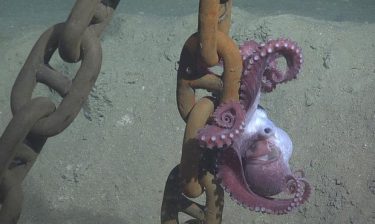 When the HMS Challenger set sail in 1872, researchers made discoveries that laid the foundation of the science of oceanography. Those early scientists couldn’t have imagined that more than a century later, the secrets of the sea could be discovered by almost anyone, even those thousands of miles from the coast.
When the HMS Challenger set sail in 1872, researchers made discoveries that laid the foundation of the science of oceanography. Those early scientists couldn’t have imagined that more than a century later, the secrets of the sea could be discovered by almost anyone, even those thousands of miles from the coast.
Today, with the National Science Foundation-funded U.S. Ocean Observatories Initiative, the ocean is accessible 24 hours a day, seven days a week to anyone with an internet connection. The University of Washington led building and installation of the OOI’s Cabled Array, an underwater ocean observatory off the Pacific Northwest coast that is connected by fiber optic, high-power communication cables to the internet.
“About four out of five instruments on the Cabled Array are still streaming data live to shore, which is phenomenal for something that’s as technologically advanced and deployed in harsh ocean environments,” said Deborah Kelley, a UW professor of oceanography who now leads the UW portion of the project. “It’s an astounding piece of infrastructure.”
This tech-heavy project creates a permanent, 24/7 scientific presence in Pacific coastal waters and the deep ocean, including on an underwater volcano 5,000 feet beneath the oceans’ surface. UW scientists and engineers built most of the hardware and installed it to transmit data live to shore for the next quarter of a century.
Read more at UW Today »
